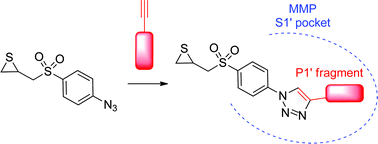Plasminergisen systeemin tehtävänä on normalisoida kehoa sen jälkeen, kun on ilmentynyt fibrinogeenistä fibriiniä, jota pitäisi hajoittaa. Samalla plasmiini useassa tapauksessa joutuu aktivoimaan avuksi MMP-klusterin, jotta suuresta hyytymästä päästään eroon ja kudoksia voidaan uudistaa.
Mistä syystä siten kehon koagulaatiojärjestelmä aktivoituu ja trombiini alkaa pilkkoa fibrinogeenistä fibriiniä ja vaikutaa loputla palautumatonta stabiilia fibriiniä?
Siihen on tiestysti paljon syitäja niihin on suurin osa tieteellisestä artikkeleista reologian alalta keskittynytkin.
Tromboosin estämiseen tavataan käyttää milloin aspiriinia, milloin marevan tyyppistä antikoagulanttia , milloin muita strategioita , kuten trombosyyttien estäjiä.
Mutta keholla on myös oma järjestelmänsä, jolla se aivan jatkuvasti hoitaa negatiivisen antikoagulaation ja järjestelmän pitäisi normaalissa kehossa toimia. Siinä trombiinin ilmenemä aktivoi veressä normaalisti kiertävää C-proteiinia ja aktivoitu C-proteiini aPC toimii koagulaatiokaskadin rauhoittajana.
Mutta jos käytetään suuria määriä aspiriinia tai marevania, C-proteiinia ei saada aktivoitumaan antikoagulantiksi, joten joudutaan pilleri pillerin jälkeen säätämään lopulta koko järjestelmää sen sijaan että luottaisiin kehon normaaliin koagulatiiviseen tasapainoon.
Mitä se normaali tasapaino käsittää? Eräs tärkeä koagulaatiotekijä on aktiivi kalsiumjoni. (Tekijä FIV)
Jota kalsiumjoni pysyisi normaalipuitteissa ja kertyisi varastoihinsa kuten luustoon, todellakin tarvitaan tehokasta liikuntaa.
Jos liikunta puuttuu, on miltei mahdoton ilman lääkkeitä selvitä koagulaatiotasapainon hoidosta ja samalla vielä luusto purkaa kalsiumia.
Jos haluaa säilyttää normaalin koagulaatio-järjestelmänsä kannattaa kohtalaisen tai runsaan liikunnan lisäksi käyttää K1-vitamiinipitoista ravintoa, kuten vihreitä vihanneksia ja kasvisöljyjä, jolloin saa edellytyksiä negatiivisen kogulaatiokontrollin jäsenten posttranslationaaliseen muokkautumiseen funktionaaliseen muotoon. Tämä voisi "pinnan alla" näkymättömissä pitää reologista tasapainoa sellaisessa tilassa, että ei muodostuisi siinä määrin sulamatonta fibriiniä, että plasminerginen järjestelmä aktivoituu ja jopa aktivoi MMP-järjestelmän.
Normaalisti MMP-järjestelmä on hyvin vähäisesti aktivoituneena. Vain tarvittessa jossain paikallisesti se vaikuttaa uudistelemassa solukalvojen extrasellulaarista materiaalia- se hajoittaa monin spesifisin tekijin vanhat materiaalit, jota uutta pääsee muodostumaan.
Jotta riehahtanutta MMP-järjestelmää saa rauhoittumaan täytyy katsoa syntyjä syviä aivan fibriinin muodostumiseen asti. Tämä on hyvin yksinkertaistettu selitys.
MMP-järjestelmän rauhoittamisessa ei ole eduksi käyttää antitromboottisia lääkkeitä kuten ASA ja antikoagulanttia vaikka lyhyellä tähätimellä ne estävät fibriiniä muodostaumasta.
MMP on hyvin monimutkainen järjestelmä eikä sille ole olemassa vielä mitään erityisiä rauhoittavia lääkkeitä, estäjiä. ne eivät vähene ASA tai antikoagulanttilääkityksestä.
Nykyään vielä kartoitetaan, miten paljon järjestelmä riehuu erilaisissa tiloissa.
Sellaisen liikunnan , joka ei ledeeraa, riko kudoksia (aiheuta kudosrikkoja), ei varinaisesti pitäisi aktivoida MMP-järjestelmää ylimäärin.
Tässä lähinnä korostaisin kudoksille aivan perustavasti tärkeitä olosuhteita: ravintosuositukset ovat sitä linjaa, kasvisten osuutta vuosi vuodelta korostetaan enemmän ja se samalla stabiloi Kvitamiinin saannin hieman korkeammalle tasolle, mitä ennen näitä suosituksia. Suosituksissa on myös sellaisia öljyjä, jotka antavat K1-vitamiinia. Tämä on hidas tie korjata villiintynyttä MMP-klusteritoimintaa ja toivottavasti tapahtuu jotain palautumista - siis MMP-järjestelmän palautumista inaktiiviin tilaan.
Tämä on uusi kartta joka on ilmeentynyt koagulaatiokaskadin ja fibrinolyyttisen kaskadin vierelle, eikä kaikki vuorovaikutukset ole millään tavalla varmoja nuolia kartalla vielä. Lisätekijä on TIMP-kartta, MMP-kudosinhibiittorit , jotka näyttävät jo riehuvan syöpätutkimusalan karttojen puolella. nekin ovat yllättäen osoitatneet pahat puolensa, eikä nekään ole mitenkään helposti lääkkeellisesti säädeltäviä.
Alun perin saataa koko tämä ihmeellisen hyvä kaskadisekvessi mennä pieleen vain pelkästä liikunnan puutteesta ja joistain elintapatekijöistä. Pelkkä puolen tunnin lisäliikunta päivää kohti voisi olla avain oikeaan suuntaan johtavalle ovelle.

